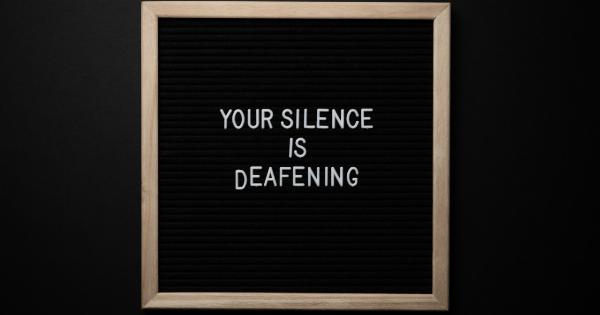Herpes zoster, commonly known as shingles, is a viral infection caused by the varicella-zoster virus. This virus is the same one that causes chickenpox.
Once you have had chickenpox, the virus stays dormant in your body and can reactivate years later, leading to shingles.
The Symptoms of Herpes Zoster
Shingles typically starts with a painful rash that appears as a band or patch of red blisters on one side of your body. The rash is usually accompanied by itching, tingling, or burning sensations.
Other common symptoms include fever, headache, and fatigue. It is essential to seek medical attention if you suspect you have shingles, as early treatment can help reduce the severity and duration of the outbreak.
Risk Factors for Herpes Zoster
While anyone who has had chickenpox can develop shingles, certain factors increase the risk of developing herpes zoster. These include:.
- Advancing age: Shingles is more common in people over the age of 50.
- Compromised immune system: Individuals with weakened immune systems, such as those with HIV/AIDS or undergoing chemotherapy, have a higher risk.
- Stress: High stress levels can weaken the immune system, making it easier for the virus to reactivate.
- Previous shingles infection: Although rare, it is possible to have multiple episodes of shingles.
Preventing Herpes Zoster
Fortunately, several preventive measures can help shield yourself from herpes zoster:.
1. Vaccination
A shingles vaccine is available, known as the zoster vaccine. It is recommended for individuals aged 50 and above, although it can be given to certain individuals between 18 and 49 years old with specific medical conditions.
The vaccine reduces the risk of shingles and also helps prevent complications such as postherpetic neuralgia (PHN) – a condition characterized by persistent nerve pain after the shingles rash has healed.
2. Maintaining a Healthy Immune System
A strong immune system can help protect you from various infections, including herpes zoster. Focus on maintaining a healthy lifestyle that includes regular exercise, a balanced diet, adequate sleep, and stress management.
These practices can help boost your immune system, making it more resilient against viruses.
3. Practicing Good Hygiene
Herpes zoster is contagious, especially when the rash is in the blistering phase. To prevent the transmission of the virus, avoid direct contact with the rash and ensure proper hygiene practices.
Wash your hands frequently, especially after touching the affected area, and avoid sharing personal items like towels or clothing.
4. Managing Stress Levels
Stress can weaken the immune system, making you more susceptible to infections such as shingles. Engage in stress-reduction techniques such as exercise, meditation, deep breathing exercises, or pursuing hobbies that help you relax.
Finding healthier ways to cope with stress can help protect your overall well-being and reduce the risk of recurrent shingles outbreaks.
5. Avoiding Contact with Individuals with Active Shingles
Direct contact with the shingles rash or blistering phase increases the risk of developing shingles, especially for individuals who have never had chickenpox.
If you have not had chickenpox or have not been vaccinated against it, avoid close contact with individuals who have active shingles.
6. Early Antiviral Treatment
If you suspect you have shingles, it is crucial to seek medical attention promptly. Early antiviral treatment, usually within 72 hours of the rash’s appearance, can help minimize the severity and duration of symptoms.
Antiviral medications also reduce the risk of complications and the potential for chronic pain.
7. Proper Wound Care
While shingles can be uncomfortable, proper wound care can help prevent secondary infections. Keep the affected area clean and dry, and avoid scratching or picking at the blisters to prevent bacterial contamination.
If needed, your healthcare provider may recommend specific creams or medications to alleviate itching or pain.
8. Education and Awareness
Stay informed about herpes zoster and its risk factors. Understanding the infection, its symptoms, and prevention strategies empowers you to take proactive steps to protect yourself.
Additionally, sharing this knowledge with others can contribute to overall community health.
9. Regular Check-ups
Schedule regular check-ups with your healthcare provider to discuss your overall health, including any concerns related to shingles or other viral infections.
Your healthcare provider can assess your risk factors, make personalized recommendations, and address any questions or symptoms you may have.
10. Supportive Measures
If you have experienced shingles or are at high risk, consider seeking support from a healthcare professional or joining support groups.
These resources can provide valuable information, coping strategies, and emotional support to navigate the challenges associated with herpes zoster.































